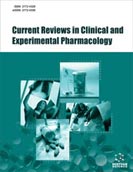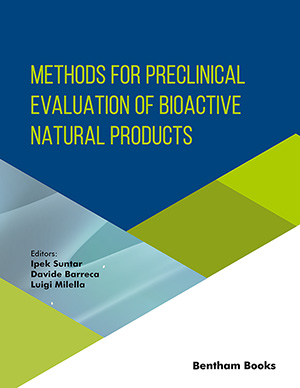Abstract
The neurobiology drug discovery landscape has transformed over the past decade or so by the discovery of allosteric modulators of receptor superfamilies. A wide range of physiological reactions can occur in response to a limited number of neurotransmitters. This review provides an update on physiological features of the receptors and the signaling pathways that are generated in response to neuroreceptor activation that allow the explanation of this vast array of neurotransmitter responses. Primarily based upon structure, receptors in the nervous system can be classified into four groups: Gprotein coupled receptors, ligand-gated receptors, enzyme-linked receptors, and nuclear receptors. With a particular emphasis on the central nervous system, i.e., brain, spinal cord, and optic nerves, we identify the neuroreceptors, their endogenous agonists, antagonists, sites of expression within the nervous system, current neuropharmacological clinical use, and potential for new drug discovery. New molecular approaches and advances in our knowledge of neuronal communication in processes involved in development, functioning and disorders of the nervous system combined with opportunities to re-purpose existing drugs for new indications continue to highlight the exciting opportunities to improve human health.
Keywords: Neuroreceptor, central nervous system, drug discovery, environmental stimuli, ion channels, G protein-coupled receptors, enzyme-linked receptors, nuclear receptors, endogenous ligands, signaling cascades.
[http://dx.doi.org/10.1016/j.neuron.2010.09.024] [PMID: 21092855]
[PMID: 23584863]
[http://dx.doi.org/10.1016/j.celrep.2019.06.030] [PMID: 31291571]
[http://dx.doi.org/10.1038/s41392-020-00435-w] [PMID: 33414387]
[http://dx.doi.org/10.3390/cells9020506] [PMID: 32102186]
[http://dx.doi.org/10.23736/S0390-5616.17.04021-8] [PMID: 29115097]
[http://dx.doi.org/10.1016/j.neuron.2016.03.032] [PMID: 27151638]
[http://dx.doi.org/10.1113/jphysiol.2011.224592] [PMID: 22210286]
[http://dx.doi.org/10.1126/science.1150609] [PMID: 17962519]
[http://dx.doi.org/10.1126/science.1150577] [PMID: 17962520]
[http://dx.doi.org/10.1016/j.cub.2005.02.037] [PMID: 15753022]
[http://dx.doi.org/10.1111/bph.12449] [PMID: 24528241]
[http://dx.doi.org/10.1155/2012/361721] [PMID: 22848811]
[PMID: 27168725]
[http://dx.doi.org/10.1080/03602532.2018.1554673] [PMID: 30501435]
[http://dx.doi.org/10.1038/nrd.2016.230] [PMID: 27910877]
[http://dx.doi.org/10.1073/pnas.1916600117] [PMID: 32041885]
[http://dx.doi.org/10.1016/j.neuropharm.2021.108886] [PMID: 34813860]
[http://dx.doi.org/10.1038/ncomms8864] [PMID: 26216096]
[http://dx.doi.org/10.1371/journal.pone.0111053] [PMID: 25340336]
[http://dx.doi.org/10.1523/JNEUROSCI.18-22-09227.1998] [PMID: 9801362]
[http://dx.doi.org/10.1529/biophysj.104.055814] [PMID: 15626699]
[http://dx.doi.org/10.1113/jphysiol.2010.203315] [PMID: 21300749]
[http://dx.doi.org/10.1038/nrd3955] [PMID: 23535933]
[http://dx.doi.org/10.1124/jpet.111.183285] [PMID: 21849624]
[http://dx.doi.org/10.1038/s41573-020-0086-4] [PMID: 33177699]
[http://dx.doi.org/10.1093/nar/gkx1121] [PMID: 29149325]
[http://dx.doi.org/10.1038/nrd.2017.178] [PMID: 29075003]
[http://dx.doi.org/10.1016/j.coph.2017.02.001] [PMID: 28288370]
[http://dx.doi.org/10.1016/j.tips.2019.04.001] [PMID: 31078319]
[http://dx.doi.org/10.1124/mol.117.111062] [PMID: 29298813]
[http://dx.doi.org/10.1016/j.pharmthera.2020.107793] [PMID: 33316288]
[http://dx.doi.org/10.1016/j.csbj.2019.08.005] [PMID: 31921393]
[http://dx.doi.org/10.3389/fnagi.2019.00089] [PMID: 31105551]
[http://dx.doi.org/10.1038/s41580-018-0049-3] [PMID: 30104700]
[http://dx.doi.org/10.1038/nrd.2017.229] [PMID: 29302067]
[http://dx.doi.org/10.1016/j.neuint.2016.09.005] [PMID: 27620813]
[http://dx.doi.org/10.1002/ana.410270502] [PMID: 2360787]
[http://dx.doi.org/10.1038/s41591-020-0815-6] [PMID: 32284590]
[http://dx.doi.org/10.1038/s41467-019-09613-z] [PMID: 30962425]
[http://dx.doi.org/10.1093/brain/awt171] [PMID: 23824488]
[http://dx.doi.org/10.1101/cshperspect.a006189] [PMID: 22229116]
[http://dx.doi.org/10.2174/1570159X11311030006] [PMID: 24179466]
[http://dx.doi.org/10.1002/ana.24001] [PMID: 25813842]
[http://dx.doi.org/10.2174/1567205011666141218122835] [PMID: 25523430]
[http://dx.doi.org/10.2165/00002018-200831070-00003] [PMID: 18558791]
[http://dx.doi.org/10.1016/j.neuropharm.2012.06.007] [PMID: 22722027]
[http://dx.doi.org/10.1016/j.neuropharm.2014.05.013] [PMID: 24863046]
[http://dx.doi.org/10.1186/1756-6606-7-40] [PMID: 24886239]
[http://dx.doi.org/10.1111/nan.12742] [PMID: 34164834]
[http://dx.doi.org/10.1111/j.1471-4159.2006.04124.x] [PMID: 16942598]
[http://dx.doi.org/10.1096/fasebj.4.10.2197154] [PMID: 2197154]
[http://dx.doi.org/10.1148/radiol.2016160274] [PMID: 27924721]
[http://dx.doi.org/10.3389/fnins.2021.665820] [PMID: 34616271]
[http://dx.doi.org/10.1097/WNF.0b013e318065b088] [PMID: 18303491]
[http://dx.doi.org/10.1097/WNF.0b013e318065b09c] [PMID: 18382184]
[http://dx.doi.org/10.3389/fncel.2021.785703] [PMID: 34899193]
[http://dx.doi.org/10.1523/JNEUROSCI.11-06-01649.1991] [PMID: 1710657]
[http://dx.doi.org/10.1016/S0028-3908(00)00079-4] [PMID: 10974306]
[http://dx.doi.org/10.1073/pnas.0502698102] [PMID: 16103364]
[http://dx.doi.org/10.3389/fnins.2013.00114] [PMID: 23847463]
[http://dx.doi.org/10.1176/appi.psy.47.1.70] [PMID: 16384811]
[http://dx.doi.org/10.1038/sj.npp.1301646] [PMID: 18059438]
[http://dx.doi.org/10.1371/journal.pone.0090134] [PMID: 24587241]
[http://dx.doi.org/10.1111/bph.13348] [PMID: 26650439]
[http://dx.doi.org/10.3389/fendo.2019.00428] [PMID: 31354618]
[http://dx.doi.org/10.1016/j.febslet.2015.05.007] [PMID: 25980603]
[http://dx.doi.org/10.1016/j.cell.2020.06.020] [PMID: 32634377]
[http://dx.doi.org/10.3389/fphar.2019.00125] [PMID: 30837883]
[http://dx.doi.org/10.1038/s41467-018-04432-0] [PMID: 29777099]
[http://dx.doi.org/10.1016/j.cell.2008.03.011] [PMID: 18394988]
[http://dx.doi.org/10.1038/nature08144] [PMID: 19458711]
[http://dx.doi.org/10.1038/nrm2299] [PMID: 18043707]
[http://dx.doi.org/10.1016/S1471-4892(01)00001-7] [PMID: 11712533]
[http://dx.doi.org/10.1016/j.cmet.2017.03.008] [PMID: 28380372]
[http://dx.doi.org/10.1016/j.jmb.2016.08.002] [PMID: 27515397]
[http://dx.doi.org/10.1016/j.tips.2017.11.009] [PMID: 29478570]
[http://dx.doi.org/10.1111/bph.14748] [PMID: 31710717]
[http://dx.doi.org/10.1146/annurev-pharmtox-010611-134548] [PMID: 23020293]
[http://dx.doi.org/10.1146/annurev.biophys.31.082901.134348] [PMID: 11988478]
[http://dx.doi.org/10.1016/j.tips.2013.11.001] [PMID: 24359917]
[http://dx.doi.org/10.1111/bph.12689] [PMID: 24628305]
[http://dx.doi.org/10.2174/187152571201141201093751] [PMID: 25470151]
[http://dx.doi.org/10.1016/j.ddtec.2012.10.007] [PMID: 24050278]
[http://dx.doi.org/10.3390/ijms22041953] [PMID: 33669406]
[http://dx.doi.org/10.1021/acs.jmedchem.8b00875] [PMID: 30106578]
[http://dx.doi.org/10.1007/s00018-007-7067-1] [PMID: 17502995]
[http://dx.doi.org/10.1002/dvdy.24473] [PMID: 27859941]
[http://dx.doi.org/10.1016/j.neuron.2012.09.009] [PMID: 23040803]
[http://dx.doi.org/10.1016/j.biopha.2017.12.056] [PMID: 29268243]
[http://dx.doi.org/10.3390/genes11060694] [PMID: 32599826]
[http://dx.doi.org/10.1007/s12016-020-08829-y] [PMID: 33411320]
[http://dx.doi.org/10.3389/fphar.2020.00628] [PMID: 32457622]
[http://dx.doi.org/10.1016/j.neuropharm.2019.107829] [PMID: 31666199]
[http://dx.doi.org/10.1021/acschemneuro.8b00572] [PMID: 30540906]
[http://dx.doi.org/10.1073/pnas.1017192108] [PMID: 21421844]
[http://dx.doi.org/10.1073/pnas.85.19.7394] [PMID: 2459705]
[http://dx.doi.org/10.1101/cshperspect.a009662] [PMID: 22233560]
[http://dx.doi.org/10.1016/bs.mie.2021.01.022] [PMID: 34059291]
[http://dx.doi.org/10.1111/bph.14749] [PMID: 31710715]
[http://dx.doi.org/10.1186/s12929-018-0448-y] [PMID: 29793480]
[http://dx.doi.org/10.1146/annurev-immunol-032414-112212] [PMID: 25861976]
[http://dx.doi.org/10.1007/s00726-011-1193-7] [PMID: 22160261]
[http://dx.doi.org/10.2174/157015911796557966] [PMID: 22379460]
[http://dx.doi.org/10.1038/nature04707] [PMID: 16554803]
[http://dx.doi.org/10.2174/0929867311320100005] [PMID: 23409712]
[http://dx.doi.org/10.1111/j.1527-3458.2001.tb00196.x] [PMID: 11474425]
[http://dx.doi.org/10.1038/s41467-020-19218-6] [PMID: 33097732]
[http://dx.doi.org/10.1085/jgp.200709926] [PMID: 18411328]
[http://dx.doi.org/10.1021/acs.jmedchem.0c01304] [PMID: 33253554]
[http://dx.doi.org/10.3389/fncel.2014.00125] [PMID: 24847210]
[http://dx.doi.org/10.1007/s00018-021-03846-2] [PMID: 34061215]
[http://dx.doi.org/10.1038/s41467-019-10910-w] [PMID: 31300657]
[http://dx.doi.org/10.2174/1570159X18666200831154658] [PMID: 32867642]
[http://dx.doi.org/10.3390/biom10030464] [PMID: 32197322]
[http://dx.doi.org/10.1038/nrn2379] [PMID: 18464791]
[http://dx.doi.org/10.1038/366565a0] [PMID: 7504783]
[http://dx.doi.org/10.1073/pnas.1208208109] [PMID: 23035248]
[http://dx.doi.org/10.1186/s43141-021-00224-0] [PMID: 34417930]
[http://dx.doi.org/10.1038/nrn920] [PMID: 12209121]
[http://dx.doi.org/10.2174/1381612821666150914121624] [PMID: 26365137]
[http://dx.doi.org/10.1152/physrev.00042.2003] [PMID: 15383648]
[http://dx.doi.org/10.1038/s41586-021-04022-z] [PMID: 34555840]
[http://dx.doi.org/10.1111/j.1749-6632.1999.tb11317.x] [PMID: 10414325]
[http://dx.doi.org/10.1124/pr.109.002451] [PMID: 20716669]
[http://dx.doi.org/10.1038/s41598-020-78672-w] [PMID: 33303878]
[http://dx.doi.org/10.1038/nature19367] [PMID: 27626375]
[http://dx.doi.org/10.1007/s00018-012-1133-z] [PMID: 22936353]
[http://dx.doi.org/10.1038/nrn1368] [PMID: 15034556]
[http://dx.doi.org/10.1016/j.neuropharm.2007.05.018] [PMID: 17644144]
[http://dx.doi.org/10.1007/s40520-013-0004-2] [PMID: 23740630]
[http://dx.doi.org/10.1146/annurev.cellbio.23.090506.123516] [PMID: 17506699]
[http://dx.doi.org/10.1152/physrev.00017.2006] [PMID: 17928584]
[http://dx.doi.org/10.1111/bph.13879] [PMID: 29055038]
[http://dx.doi.org/10.1016/S0074-7696(02)13011-7] [PMID: 11837891]
[http://dx.doi.org/10.1016/j.neuropharm.2008.07.045] [PMID: 18760291]
[http://dx.doi.org/10.1016/0166-2236(94)90155-4] [PMID: 7532336]
[http://dx.doi.org/10.1016/S0896-6273(00)80382-7] [PMID: 9331359]
[http://dx.doi.org/10.1038/ncomms1744] [PMID: 22415829]
[http://dx.doi.org/10.1038/nrn1625] [PMID: 15738957]
[http://dx.doi.org/10.1073/pnas.1906369117] [PMID: 31974304]
[http://dx.doi.org/10.1016/j.neuron.2007.11.002] [PMID: 18054854]
[http://dx.doi.org/10.1523/JNEUROSCI.3340-09.2009] [PMID: 19828786]
[http://dx.doi.org/10.1016/j.neuron.2018.05.018] [PMID: 29953871]
[http://dx.doi.org/10.1080/09687680010028762] [PMID: 11396606]
[http://dx.doi.org/10.1007/978-1-4684-5907-4_37] [PMID: 1722070]
[http://dx.doi.org/10.1074/jbc.R112.408229] [PMID: 23038260]
[http://dx.doi.org/10.1124/mol.116.105726] [PMID: 27401877]
[http://dx.doi.org/10.3389/fncel.2013.00184] [PMID: 24155690]
[http://dx.doi.org/10.1152/physrev.00043.2010] [PMID: 22298656]
[http://dx.doi.org/10.1111/nyas.12084] [PMID: 23530999]
[http://dx.doi.org/10.3390/biom11060846] [PMID: 34204137]
[http://dx.doi.org/10.1523/JNEUROSCI.5555-12.2013] [PMID: 23486948]
[http://dx.doi.org/10.1016/j.neuron.2007.09.001] [PMID: 17880890]
[http://dx.doi.org/10.1016/j.tig.2008.06.005] [PMID: 18707791]
[PMID: 16425671]
[http://dx.doi.org/10.1038/nrn1136] [PMID: 12838329]
[http://dx.doi.org/10.4161/cib.27887] [PMID: 24605182]
[http://dx.doi.org/10.1159/000356519] [PMID: 24504116]
[http://dx.doi.org/10.1152/jn.00714.2013] [PMID: 24872538]
[http://dx.doi.org/10.3389/neuro.02.009.2009] [PMID: 19738917]
[http://dx.doi.org/10.1146/annurev.immunol.19.1.497] [PMID: 11244045]
[http://dx.doi.org/10.3389/fimmu.2021.676621] [PMID: 34177918]
[http://dx.doi.org/10.2174/138161207781368693] [PMID: 17692006]
[http://dx.doi.org/10.3389/fnmol.2018.00291] [PMID: 30186111]
[http://dx.doi.org/10.1016/j.tips.2014.12.002] [PMID: 25639674]
[http://dx.doi.org/10.1016/j.neuropharm.2014.11.003] [PMID: 25460185]
[http://dx.doi.org/10.1007/s00018-016-2175-4] [PMID: 26979166]
[http://dx.doi.org/10.1007/s12576-016-0460-5] [PMID: 27256075]
[http://dx.doi.org/10.1016/j.bcp.2013.06.031] [PMID: 23856289]
[http://dx.doi.org/10.2174/1570159X15666170912110450] [PMID: 28901280]
[http://dx.doi.org/10.3389/fimmu.2017.01085] [PMID: 28932225]
[http://dx.doi.org/10.1126/science.1209985] [PMID: 21921156]
[http://dx.doi.org/10.1038/nature01339] [PMID: 12508119]
[http://dx.doi.org/10.1111/j.1749-6632.2012.06516.x] [PMID: 22823388]
[http://dx.doi.org/10.1113/jphysiol.2003.053447] [PMID: 14555718]
[http://dx.doi.org/10.1016/j.pneurobio.2007.12.005] [PMID: 18242816]
[http://dx.doi.org/10.1016/j.neubiorev.2007.10.007] [PMID: 18180036]
[http://dx.doi.org/10.1038/sj.bjp.0707264] [PMID: 17502850]
[http://dx.doi.org/10.1124/mol.116.104240] [PMID: 27190210]
[http://dx.doi.org/10.1016/j.ab.2019.03.012] [PMID: 30914244]
[http://dx.doi.org/10.1016/j.bcp.2007.06.015] [PMID: 17631864]
[http://dx.doi.org/10.1515/revneuro-2014-0044] [PMID: 25565544]
[http://dx.doi.org/10.1517/13543784.10.10.1819] [PMID: 11772288]
[http://dx.doi.org/10.1124/pr.110.003269] [PMID: 21969327]
[http://dx.doi.org/10.1038/s41467-020-16090-2] [PMID: 32393738]
[http://dx.doi.org/10.1021/cn300186b] [PMID: 23336044]
[http://dx.doi.org/10.1016/S0091-3057(01)00746-8] [PMID: 11888546]
[http://dx.doi.org/10.1016/S0028-3908(00)00109-X] [PMID: 11044738]
[http://dx.doi.org/10.1074/jbc.R112.406496] [PMID: 23038271]
[http://dx.doi.org/10.1038/339706a0] [PMID: 2472553]
[http://dx.doi.org/10.1126/science.1718042] [PMID: 1718042]
[http://dx.doi.org/10.1085/jgp.96.6.1177] [PMID: 2286832]
[http://dx.doi.org/10.1016/j.neuron.2018.04.030] [PMID: 29754752]
[http://dx.doi.org/10.1038/330746a0] [PMID: 3696238]
[http://dx.doi.org/10.3390/ijms22115797] [PMID: 34071460]
[http://dx.doi.org/10.1073/pnas.90.4.1430] [PMID: 8434003]
[http://dx.doi.org/10.1016/j.ejphar.2007.01.028] [PMID: 17316606]
[http://dx.doi.org/10.1007/s12017-013-8251-0] [PMID: 23896722]
[http://dx.doi.org/10.1124/pr.118.015487] [PMID: 31243157]
[http://dx.doi.org/10.1523/JNEUROSCI.4378-03.2004] [PMID: 15190111]
[http://dx.doi.org/10.1016/S0074-7742(08)60289-5] [PMID: 6115823]
[http://dx.doi.org/10.1016/j.conb.2004.05.007] [PMID: 15194115]
[http://dx.doi.org/10.1016/0896-6273(94)90038-8] [PMID: 7917301]
[http://dx.doi.org/10.1016/j.neuropharm.2008.08.006] [PMID: 18765242]
[http://dx.doi.org/10.1523/JNEUROSCI.1786-08.2008] [PMID: 18923034]
[http://dx.doi.org/10.1146/annurev.cellbio.24.110707.175235] [PMID: 18616423]
[http://dx.doi.org/10.1126/science.2166337] [PMID: 2166337]
[http://dx.doi.org/10.1126/science.7973663] [PMID: 7973663]
[http://dx.doi.org/10.1016/j.neuron.2009.01.015] [PMID: 19217372]
[http://dx.doi.org/10.1016/j.neuron.2018.10.018] [PMID: 30359599]
[http://dx.doi.org/10.1016/j.bcp.2005.12.022] [PMID: 16442080]
[http://dx.doi.org/10.1002/gps.934] [PMID: 12973746]
[http://dx.doi.org/10.1038/nrn.2016.37] [PMID: 27080385]
[http://dx.doi.org/10.1038/31709] [PMID: 9655394]
[http://dx.doi.org/10.1038/nn1678] [PMID: 16582904]
[http://dx.doi.org/10.1038/nature08624] [PMID: 19946266]
[http://dx.doi.org/10.1016/j.neuron.2009.02.027] [PMID: 19409270]
[http://dx.doi.org/10.7554/eLife.25462] [PMID: 28762944]
[http://dx.doi.org/10.1016/j.tins.2007.01.006] [PMID: 17275103]
[http://dx.doi.org/10.1073/pnas.102156099] [PMID: 12011465]
[http://dx.doi.org/10.1016/S0028-3908(98)00230-5] [PMID: 10340301]
[http://dx.doi.org/10.1038/386279a0] [PMID: 9069286]
[http://dx.doi.org/10.1016/S0896-6273(03)00714-1] [PMID: 14622584]
[http://dx.doi.org/10.2174/1568007043337508] [PMID: 15180479]
[http://dx.doi.org/10.1021/jm01241a010] [PMID: 14056452]
[http://dx.doi.org/10.1038/nrn3504] [PMID: 23686171]
[http://dx.doi.org/10.1126/science.2841759] [PMID: 2841759]
[http://dx.doi.org/10.1007/s12035-008-8025-0] [PMID: 18521762]
[http://dx.doi.org/10.1038/nmeth1024] [PMID: 17369835]
[http://dx.doi.org/10.1073/pnas.0802075105] [PMID: 18779583]
[http://dx.doi.org/10.1038/emboj.2008.140] [PMID: 18636091]
[http://dx.doi.org/10.1038/nature04089] [PMID: 16281028]
[http://dx.doi.org/10.1038/309261a0] [PMID: 6325946]
[http://dx.doi.org/10.1038/307462a0] [PMID: 6320006]
[http://dx.doi.org/10.1113/jphysiol.1980.sp013443] [PMID: 6259339]
[http://dx.doi.org/10.1146/annurev.ne.11.030188.000425] [PMID: 2452598]
[http://dx.doi.org/10.1016/0165-6147(90)90011-V] [PMID: 2167544]
[http://dx.doi.org/10.1126/science.284.5412.336] [PMID: 10195902]
[http://dx.doi.org/10.1073/pnas.96.14.7697] [PMID: 10393883]
[http://dx.doi.org/10.1016/S0896-6273(01)00539-6] [PMID: 11754839]
[http://dx.doi.org/10.1038/88404] [PMID: 11369939]
[http://dx.doi.org/10.1113/jphysiol.2005.095497] [PMID: 16166158]
[http://dx.doi.org/10.1016/j.mcn.2005.01.006] [PMID: 15866054]
[http://dx.doi.org/10.1124/jpet.104.077388] [PMID: 15501991]
[http://dx.doi.org/10.1212/WNL.59.5.694] [PMID: 12221159]
[http://dx.doi.org/10.1016/j.neuropharm.2013.03.030] [PMID: 23583930]
[http://dx.doi.org/10.1007/s40263-018-0519-3] [PMID: 29736744]
[http://dx.doi.org/10.1016/j.schres.2021.12.002] [PMID: 34916095]
[http://dx.doi.org/10.1046/j.1468-2982.2002.00364.x] [PMID: 12110110]
[http://dx.doi.org/10.1038/289073a0] [PMID: 6256647]
[http://dx.doi.org/10.1016/j.celrep.2021.109891] [PMID: 34706237]
[http://dx.doi.org/10.1016/j.tins.2010.12.002] [PMID: 21256604]
[http://dx.doi.org/10.1016/j.neuroscience.2019.11.050] [PMID: 31866560]
[http://dx.doi.org/10.1016/j.neuron.2012.08.027] [PMID: 23141068]
[http://dx.doi.org/10.1073/pnas.2007471117] [PMID: 32999066]
[http://dx.doi.org/10.1523/JNEUROSCI.19-19-08281.1999] [PMID: 10493729]
[http://dx.doi.org/10.1046/j.1471-4159.2003.01945.x] [PMID: 12950450]
[http://dx.doi.org/10.1016/0896-6273(92)90098-X] [PMID: 1373632]
[http://dx.doi.org/10.1038/351742a0] [PMID: 1648176]
[http://dx.doi.org/10.1016/j.neuropharm.2008.08.023] [PMID: 18793656]
[http://dx.doi.org/10.1523/JNEUROSCI.20-01-00196.2000] [PMID: 10627597]
[http://dx.doi.org/10.1113/jphysiol.2007.133975] [PMID: 17569736]
[http://dx.doi.org/10.1073/pnas.0608891104] [PMID: 17620617]
[http://dx.doi.org/10.1016/j.celrep.2018.05.086] [PMID: 29949767]
[http://dx.doi.org/10.1523/JNEUROSCI.0284-07.2007] [PMID: 17581967]
[http://dx.doi.org/10.1038/40639] [PMID: 9217158]
[http://dx.doi.org/10.1038/sj.emboj.7601865] [PMID: 17898803]
[http://dx.doi.org/10.1007/978-1-4419-9557-5_7] [PMID: 21713668]
[http://dx.doi.org/10.1016/S0896-6273(03)00436-7] [PMID: 12895426]
[http://dx.doi.org/10.1016/0024-3205(81)90659-7] [PMID: 7031398]
[http://dx.doi.org/10.1002/j.1460-2075.1992.tb05211.x] [PMID: 1373382]
[http://dx.doi.org/10.1523/JNEUROSCI.4059-04.2005] [PMID: 15673679]
[http://dx.doi.org/10.1523/JNEUROSCI.5542-06.2007] [PMID: 17429000]
[http://dx.doi.org/10.1074/jbc.M800393200] [PMID: 18678878]
[http://dx.doi.org/10.1385/MN:30:2:127] [PMID: 15475623]
[http://dx.doi.org/10.1038/88432] [PMID: 11369942]
[http://dx.doi.org/10.1523/JNEUROSCI.2217-15.2015] [PMID: 26446216]
[http://dx.doi.org/10.1016/S0006-3223(01)01084-8] [PMID: 11566156]
[http://dx.doi.org/10.1016/S0893-133X(00)00189-5] [PMID: 11282254]
[http://dx.doi.org/10.1017/S1461145714000510] [PMID: 24786948]
[http://dx.doi.org/10.1007/s00213-013-3137-2] [PMID: 23660601]
[http://dx.doi.org/10.1371/journal.pone.0032483] [PMID: 22396770]
[http://dx.doi.org/10.1007/BF03033803] [PMID: 19073419]
[http://dx.doi.org/10.1126/scisignal.3136pe28] [PMID: 20736482]
[http://dx.doi.org/10.1111/ejn.12193] [PMID: 23551821]
[http://dx.doi.org/10.1126/sciadv.abk2200] [PMID: 34936451]
[http://dx.doi.org/10.1016/0014-5793(93)81186-4] [PMID: 8422924]
[http://dx.doi.org/10.1016/0006-291X(92)90566-4] [PMID: 1372507]
[http://dx.doi.org/10.1371/journal.pone.0032969] [PMID: 22412961]
[http://dx.doi.org/10.1006/bbrc.1993.2614] [PMID: 7506541]
[http://dx.doi.org/10.1016/j.neunet.2012.07.001] [PMID: 22840919]
[http://dx.doi.org/10.1016/j.jsb.2020.107546] [PMID: 32512155]
[http://dx.doi.org/10.1038/s41594-019-0359-y] [PMID: 31925409]
[http://dx.doi.org/10.1126/science.1184821] [PMID: 20203048]
[http://dx.doi.org/10.1038/s41467-019-11646-3] [PMID: 31427578]
[http://dx.doi.org/10.1152/physrev.00035.2006] [PMID: 17429043]
[http://dx.doi.org/10.1002/(SICI)1096-9861(19990405)406:2<207:::AID-CNE6>3.0.CO;2-7] [PMID: 10096607]
[http://dx.doi.org/10.1016/j.jaci.2020.06.039] [PMID: 32781002]
[http://dx.doi.org/10.1186/1752-0509-6-70] [PMID: 22703638]
[http://dx.doi.org/10.3233/JHD-180301] [PMID: 31256144]
[http://dx.doi.org/10.3389/fncel.2021.695817] [PMID: 34393726]
[http://dx.doi.org/10.3389/fncel.2021.685201] [PMID: 34658788]
[http://dx.doi.org/10.1038/nature22798] [PMID: 28614305]
[http://dx.doi.org/10.1007/s11302-012-9314-7] [PMID: 22547202]
[http://dx.doi.org/10.1152/physrev.00015.2002] [PMID: 12270951]
[http://dx.doi.org/10.1152/physrev.00043.2006] [PMID: 17429044]
[http://dx.doi.org/10.1124/pr.110.003129] [PMID: 21737531]
[http://dx.doi.org/10.1021/cr3000829] [PMID: 22988962]
[http://dx.doi.org/10.2174/156802611795347627] [PMID: 21401499]
[http://dx.doi.org/10.3389/fphar.2018.00030] [PMID: 29449810]
[http://dx.doi.org/10.1523/JNEUROSCI.3103-16.2017] [PMID: 28747388]
[http://dx.doi.org/10.1016/j.neuroscience.2018.12.021] [PMID: 30582977]
[PMID: 28836401]
[http://dx.doi.org/10.1016/j.immuni.2020.01.012] [PMID: 32049054]
[http://dx.doi.org/10.1007/s11302-012-9304-9] [PMID: 22528679]
[http://dx.doi.org/10.1152/ajpheart.2000.279.1.H285] [PMID: 10899068]
[http://dx.doi.org/10.1189/jlb.0312121] [PMID: 22753954]
[http://dx.doi.org/10.1523/JNEUROSCI.15-04-02961.1995] [PMID: 7722640]
[http://dx.doi.org/10.1083/jcb.201409071] [PMID: 26101220]
[http://dx.doi.org/10.1093/brain/awh627] [PMID: 16219674]
[http://dx.doi.org/10.3390/cells10092282] [PMID: 34571930]
[http://dx.doi.org/10.1016/j.neubiorev.2017.05.001] [PMID: 28499503]
[http://dx.doi.org/10.1186/s12974-018-1068-x] [PMID: 29433511]
[http://dx.doi.org/10.1084/jem.20191365] [PMID: 32991666]
[http://dx.doi.org/10.1016/S0014-2999(02)01756-9] [PMID: 12151016]
[http://dx.doi.org/10.1002/glia.22674] [PMID: 24753049]
[http://dx.doi.org/10.1002/glia.20649] [PMID: 18293404]
[http://dx.doi.org/10.1002/glia.20902] [PMID: 19533604]
[http://dx.doi.org/10.1523/JNEUROSCI.3902-05.2006] [PMID: 16452661]
[http://dx.doi.org/10.1186/s40478-016-0344-1] [PMID: 27455844]
[http://dx.doi.org/10.3389/fncel.2019.00143] [PMID: 31031598]
[http://dx.doi.org/10.1038/s41380-018-0108-3] [PMID: 29934546]
[http://dx.doi.org/10.4049/jimmunol.0803612] [PMID: 19299738]
[http://dx.doi.org/10.1016/j.coph.2019.03.010] [PMID: 31015145]
[http://dx.doi.org/10.4049/jimmunol.0901212] [PMID: 19734218]
[http://dx.doi.org/10.3892/mmr.2016.6070] [PMID: 28035410]
[http://dx.doi.org/10.3390/ijms20112778] [PMID: 31174279]
[http://dx.doi.org/10.1074/jbc.M605122200] [PMID: 16882660]
[http://dx.doi.org/10.1007/s13311-018-0619-2] [PMID: 29549622]
[http://dx.doi.org/10.1038/nrn3529] [PMID: 23783197]
[http://dx.doi.org/10.5483/BMBRep.2013.46.6.121] [PMID: 23790972]
[http://dx.doi.org/10.2174/138945012799201685] [PMID: 22204324]
[PMID: 19736627]
[http://dx.doi.org/10.1016/j.pharmthera.2010.08.006] [PMID: 20807551]
[http://dx.doi.org/10.1038/386173a0] [PMID: 9062189]
[http://dx.doi.org/10.1002/syn.22120] [PMID: 31180161]
[PMID: 21383888]
[http://dx.doi.org/10.1186/1756-6606-6-1] [PMID: 23281934]
[http://dx.doi.org/10.1523/JNEUROSCI.1665-11.2011] [PMID: 21715637]
[http://dx.doi.org/10.1038/nature25782] [PMID: 29513651]
[http://dx.doi.org/10.1074/jbc.M313507200] [PMID: 14701823]
[http://dx.doi.org/10.1085/jgp.200509396] [PMID: 16418400]
[http://dx.doi.org/10.1681/ASN.2008020225] [PMID: 18753254]
[http://dx.doi.org/10.1113/JP274856] [PMID: 28714095]
[http://dx.doi.org/10.1007/s10254-004-0023-7] [PMID: 15146350]
[http://dx.doi.org/10.3389/fncel.2017.00297] [PMID: 29033788]
[http://dx.doi.org/10.1038/308734a0] [PMID: 6717566]
[http://dx.doi.org/10.1038/308736a0] [PMID: 6717567]
[http://dx.doi.org/10.1074/jbc.M208814200] [PMID: 12381728]
[http://dx.doi.org/10.1016/j.bbrc.2005.07.079] [PMID: 16083862]
[http://dx.doi.org/10.1523/JNEUROSCI.1980-20.2020] [PMID: 33597269]
[http://dx.doi.org/10.3390/nu13072273] [PMID: 34209133]
[http://dx.doi.org/10.1111/bph.14752] [PMID: 31710714]
[http://dx.doi.org/10.3389/fimmu.2018.00513] [PMID: 29616029]
[http://dx.doi.org/10.4049/jimmunol.1600450] [PMID: 27233965]
[http://dx.doi.org/10.1186/s12885-019-5804-0] [PMID: 31208363]
[http://dx.doi.org/10.1038/sj.onc.1203957] [PMID: 11114734]
[http://dx.doi.org/10.1146/annurev.cb.10.110194.001343] [PMID: 7888178]
[http://dx.doi.org/10.1126/science.2825356] [PMID: 2825356]
[http://dx.doi.org/10.1038/nn.2231] [PMID: 19029886]
[http://dx.doi.org/10.1126/scisignal.aat0114] [PMID: 30065026]
[http://dx.doi.org/10.1016/j.ajpath.2012.06.043] [PMID: 23021982]
[http://dx.doi.org/10.1111/j.1460-9568.2007.05859.x] [PMID: 17970742]
[http://dx.doi.org/10.1002/jcp.20007] [PMID: 15254961]
[http://dx.doi.org/10.1016/j.ctrv.2018.05.004] [PMID: 29772459]
[http://dx.doi.org/10.1186/s12885-018-4911-7] [PMID: 30348116]
[http://dx.doi.org/10.1021/acs.jmedchem.5b01073] [PMID: 26313252]
[http://dx.doi.org/10.1073/pnas.0904998106] [PMID: 19549834]
[http://dx.doi.org/10.1186/1479-5876-10-239] [PMID: 23190582]
[http://dx.doi.org/10.3389/fnins.2019.00533] [PMID: 31312116]
[http://dx.doi.org/10.1186/1477-5751-11-5] [PMID: 22236693]
[http://dx.doi.org/10.2174/187152708783885174] [PMID: 18289031]
[http://dx.doi.org/10.1146/annurev.biochem.72.121801.161629] [PMID: 12676795]
[http://dx.doi.org/10.1038/ncpendmet0424] [PMID: 17315033]
[http://dx.doi.org/10.1016/S0301-0082(02)00016-3] [PMID: 12169297]
[http://dx.doi.org/10.1016/j.cell.2010.06.011] [PMID: 20602996]
[http://dx.doi.org/10.1111/cbdd.12446] [PMID: 25298192]
[http://dx.doi.org/10.1007/s00441-003-0756-7] [PMID: 12845521]
[http://dx.doi.org/10.1074/jbc.271.25.15292] [PMID: 8663044]
[http://dx.doi.org/10.1007/s12035-021-02367-0] [PMID: 33860438]
[http://dx.doi.org/10.1038/ncomms10262] [PMID: 26725515]
[http://dx.doi.org/10.1016/j.cytogfr.2005.01.001] [PMID: 15863030]
[http://dx.doi.org/10.1038/nrn812] [PMID: 11988777]
[http://dx.doi.org/10.1080/07853890701646256] [PMID: 17934909]
[http://dx.doi.org/10.1038/nchembio823] [PMID: 17013378]
[http://dx.doi.org/10.1016/j.euroneuro.2014.01.020] [PMID: 24529663]
[http://dx.doi.org/10.1002/j.1460-2075.1985.tb04097.x] [PMID: 3004958]
[http://dx.doi.org/10.4161/cc.10.11.15824] [PMID: 21597332]
[http://dx.doi.org/10.1155/2012/384017] [PMID: 22500228]
[http://dx.doi.org/10.1038/npp.2015.312] [PMID: 26448203]
[http://dx.doi.org/10.1016/S0006-3223(02)01815-2] [PMID: 12946883]
[http://dx.doi.org/10.1046/j.1460-9568.1999.00798.x] [PMID: 10583467]
[http://dx.doi.org/10.1523/JNEUROSCI.20-17-06478.2000] [PMID: 10964954]
[http://dx.doi.org/10.3389/fnsyn.2021.749001] [PMID: 34690733]
[http://dx.doi.org/10.1042/BJ20070665] [PMID: 18031286]
[http://dx.doi.org/10.1111/j.1471-4159.2005.02977.x] [PMID: 15748156]
[http://dx.doi.org/10.1074/jbc.M103501200] [PMID: 11319238]
[http://dx.doi.org/10.1038/ng.2802] [PMID: 24162737]
[http://dx.doi.org/10.1111/bph.14750] [PMID: 31710718]
[http://dx.doi.org/10.1021/acs.jmedchem.0c00868] [PMID: 32787092]
[http://dx.doi.org/10.1146/annurev-pharmtox-010818-021807] [PMID: 30208281]
[http://dx.doi.org/10.1073/pnas.1509742112] [PMID: 26124091]
[http://dx.doi.org/10.1158/1055-9965.EPI-10-0658] [PMID: 20841389]
[http://dx.doi.org/10.1172/JCI88891] [PMID: 28218618]
[http://dx.doi.org/10.1038/nrd2199] [PMID: 17139284]
[http://dx.doi.org/10.1002/cmdc.200600006] [PMID: 16892386]
[http://dx.doi.org/10.1016/j.mce.2010.06.018] [PMID: 20615454]
[http://dx.doi.org/10.1621/nrs.01004] [PMID: 16604176]
[http://dx.doi.org/10.1038/s12276-021-00703-x] [PMID: 34857900]
[http://dx.doi.org/10.1096/fj.201600275R] [PMID: 27468758]
[http://dx.doi.org/10.1073/pnas.2016717118] [PMID: 33436410]
[http://dx.doi.org/10.1038/nsmb1344] [PMID: 18037887]
[http://dx.doi.org/10.3389/fnsys.2018.00063] [PMID: 30618656]
[http://dx.doi.org/10.1111/j.1526-4610.2011.01908.x] [PMID: 21631476]
[http://dx.doi.org/10.1073/pnas.0306147101] [PMID: 15016917]
[http://dx.doi.org/10.3389/fphar.2020.587457] [PMID: 33328994]
[http://dx.doi.org/10.1016/j.tem.2006.07.004] [PMID: 16870465]
[http://dx.doi.org/10.1038/s41380-020-0667-y] [PMID: 32034290]
[http://dx.doi.org/10.1038/s12276-021-00555-5] [PMID: 33479411]
[http://dx.doi.org/10.1186/s12974-018-1091-y] [PMID: 29448961]
[http://dx.doi.org/10.1194/jlr.R075556] [PMID: 28264880]
[http://dx.doi.org/10.1016/j.ebiom.2020.103130] [PMID: 33279456]
[http://dx.doi.org/10.1159/000485565] [PMID: 29888229]
[http://dx.doi.org/10.1176/appi.ajp.2020.19080848] [PMID: 32456504]
[http://dx.doi.org/10.1016/j.nbd.2014.05.019]
[http://dx.doi.org/10.1146/annurev-physiol-021909-135917] [PMID: 20148675]
[http://dx.doi.org/10.1146/annurev.physiol.69.031905.160308] [PMID: 17137423]
[http://dx.doi.org/10.1530/JME-13-0173] [PMID: 24103914]
[http://dx.doi.org/10.1210/me.2002-0258] [PMID: 12511601]
[http://dx.doi.org/10.1621/nrs.10001] [PMID: 22438791]
[http://dx.doi.org/10.1038/375190a0] [PMID: 7746310]
[http://dx.doi.org/10.1038/375203a0] [PMID: 7746322]
[http://dx.doi.org/10.2174/156802612799436641] [PMID: 22242852]
[http://dx.doi.org/10.1038/nsb0196-87] [PMID: 8548460]
[http://dx.doi.org/10.1016/j.jmb.2005.10.009] [PMID: 16289203]
[http://dx.doi.org/10.1146/annurev.biochem.68.1.559] [PMID: 10872460]
[http://dx.doi.org/10.1016/S0955-0674(98)80015-X] [PMID: 9640540]
[http://dx.doi.org/10.1038/42750] [PMID: 9192902]
[http://dx.doi.org/10.1126/science.272.5266.1336] [PMID: 8650544]
[http://dx.doi.org/10.1038/nsmb910] [PMID: 15723037]
[http://dx.doi.org/10.1074/jbc.M109.073650] [PMID: 20080977]
[http://dx.doi.org/10.1002/pro.3496] [PMID: 30109749]
[http://dx.doi.org/10.2174/1568010042634541] [PMID: 15584884]
[http://dx.doi.org/10.1124/pr.58.4.2] [PMID: 17132848]
[http://dx.doi.org/10.1016/S0092-8674(00)80726-6] [PMID: 10219237]
[http://dx.doi.org/10.1002/1521-1878(200008)22:8<717::AID-BIES5>3.0.CO;2-I] [PMID: 10918302]
[http://dx.doi.org/10.1093/sysbio/49.2.183] [PMID: 12118404]
[http://dx.doi.org/10.1016/j.beem.2015.07.004] [PMID: 26303087]
[PMID: 229491]
[http://dx.doi.org/10.1016/j.pneurobio.2005.03.002] [PMID: 15882777]
[http://dx.doi.org/10.1007/s00429-011-0359-0] [PMID: 22075950]
[http://dx.doi.org/10.1038/srep27618] [PMID: 27283430]
[http://dx.doi.org/10.1038/nrd4100] [PMID: 24577401]
[http://dx.doi.org/10.11131/2015/101185] [PMID: 26878025]
[http://dx.doi.org/10.1002/1873-3468.12373] [PMID: 27545319]
[http://dx.doi.org/10.1007/s00401-016-1593-6] [PMID: 27383204]
[http://dx.doi.org/10.1073/pnas.172510899] [PMID: 12368482]
[http://dx.doi.org/10.3389/fneur.2020.00019] [PMID: 32082243]
[http://dx.doi.org/10.1038/nn.2702] [PMID: 21131950]
[http://dx.doi.org/10.1016/j.bbalip.2011.09.014] [PMID: 22020178]
[http://dx.doi.org/10.1074/jbc.273.26.16391] [PMID: 9632703]
[http://dx.doi.org/10.1016/0960-0760(95)00225-1] [PMID: 8603050]
[http://dx.doi.org/10.1371/journal.pone.0119021] [PMID: 25774879]
[PMID: 8395013]
[http://dx.doi.org/10.1128/MCB.15.5.2517] [PMID: 7739535]
[http://dx.doi.org/10.1128/MCB.15.9.4791] [PMID: 7651396]
[http://dx.doi.org/10.1046/j.1432-1327.1999.00842.x] [PMID: 10542063]
[http://dx.doi.org/10.1007/BF02736784] [PMID: 8860236]
[http://dx.doi.org/10.1111/j.1365-2826.2011.02174.x] [PMID: 21668533]
[http://dx.doi.org/10.1507/endocrj.EJ14-0017] [PMID: 24531913]
[http://dx.doi.org/10.1016/j.tcb.2004.03.008] [PMID: 15130581]
[http://dx.doi.org/10.1016/j.neuron.2005.12.021] [PMID: 16423694]
[http://dx.doi.org/10.1152/ajpregu.00794.2010] [PMID: 21325649]
[http://dx.doi.org/10.1016/j.regpep.2011.01.005] [PMID: 21262273]
[http://dx.doi.org/10.1210/en.2011-0178] [PMID: 21914774]
[PMID: 7854358]
[http://dx.doi.org/10.1371/journal.pone.0103985] [PMID: 25140725]
[http://dx.doi.org/10.1006/bbrc.1998.8391] [PMID: 9535790]
[http://dx.doi.org/10.1128/MCB.00898-06] [PMID: 17030610]
[http://dx.doi.org/10.1128/MCB.00019-09] [PMID: 19279189]
[http://dx.doi.org/10.1038/s41467-019-10264-3] [PMID: 31175293]
[http://dx.doi.org/10.1101/cshperspect.a016709] [PMID: 23457262]





























